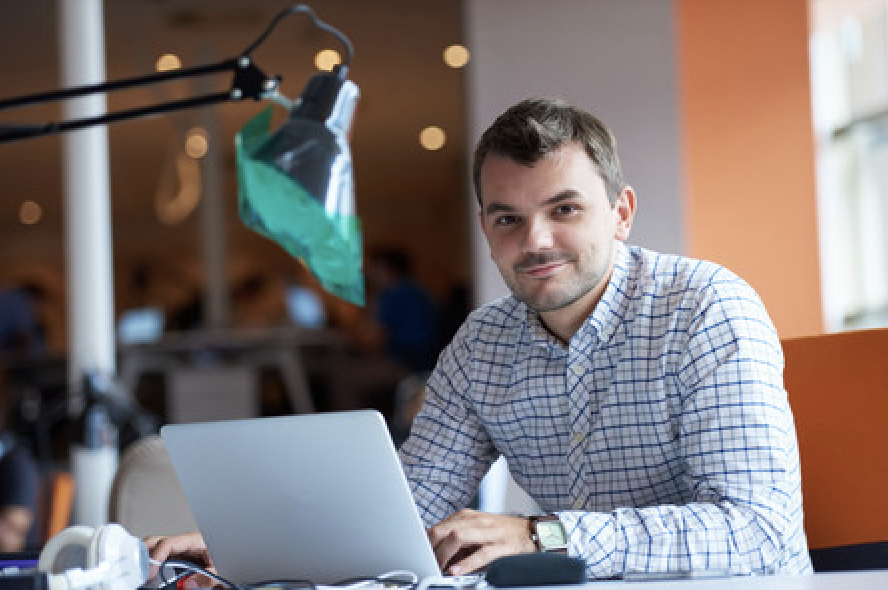【SAT写作素材】人物经典事例:拉里·佩奇
北京sat培训,sat备考资料,sat网课,sat培训机构,sat保分班,sat真题
分享给大家SAT写作中经典人物例子:关于拉里·佩奇的人物事例,希望能帮助大家丰富SAT写作素材。
Early life and education
Larry Page was born in Lansing, Michigan. His father, Carl Page, earned a
Ph.D. in computer science in 1965 when the field was in its infancy, and is
considered a "pioneer in computer science and artificial intelligence." Both he
and Page's mother were computer science professors at Michigan State University.
Gloria Page, his mother, is Jewish but he was raised without religion.
Page attended the Okemos Montessori School (now called Montessori Radmoor) in
Okemos, Michigan from 1975 to 1979, and graduated from East Lansing High School
in 1991. He holds a Bachelor of Science in computer engineering from the
University of Michigan with honors and a Master of Science in computer science
from Stanford University. While at the University of Michigan, "Page created an
inkjet printer made of Lego bricks" (actually a line plotter), served as the
president of the Eta Kappa Nu in Fall 1994, and was a member of the 1993 "Maize
; Blue" University of Michigan Solar Car team.
During an interview, Page recalled his childhood, noting that his house "was
usually a mess, with computers and Popular Science magazines all over the
place". His attraction to computers started when he was six years old when he
got to "play with the stuff lying around". He became the "first kid in his
elementary school to turn in an assignment from a word processor." His older
brother also taught him to take things apart, and before long he was taking
"everything in his house apart to see how it worked". He said that "from a very
early age, I also realized I wanted to invent things. So I became really
interested in technology...and business . . . probably from when I was 12, I
knew I was going to start a company eventually".
After enrolling for a Ph.D. program in computer science at Stanford
University, Larry Page was in search of a dissertation theme and considered
exploring the mathematical properties of the World Wide Web, understanding its
link structure as a huge graph. His supervisor Terry Winograd encouraged him to
pursue this idea, which Page later recalled as "the best advice I ever got".
Page then focused on the problem of finding out which web pages link to a given
page, considering the number and nature of such backlinks to be valuable
information about that page (with the role of citations in academic publishing
in mind). In his research project, nicknamed "BackRub", he was soon joined by
Sergey Brin, a fellow Stanford Ph.D. student.
John Battelle, co-founder of Wired magazine, wrote of Page that he had
reasoned that the "entire Web was loosely based on the premise of citation –
after all, what is a link but a citation? If he could devise a method to count
and qualify each backlink on the Web, as Page puts it 'the Web would become a
more valuable place'." Battelle further described how Page and Brin began
working together on the project:
"At the time Page conceived of BackRub, the Web comprised an estimated 10
million documents, with an untold number of links between them. The computing
resources required to crawl such a beast were well beyond the usual bounds of a
student project. Unaware of exactly what he was getting into, Page began
building out his crawler.
"The idea's complexity and scale lured Brin to the job. A polymath who had
jumped from project to project without settling on a thesis topic, he found the
premise behind BackRub fascinating. "I talked to lots of research groups" around
the school, Brin recalls, "and this was the most exciting project, both because
it tackled the Web, which represents human knowledge, and because I liked
Larry".
Brin and Page originally met in March 1995, during a spring orientation of
new computer Ph.D. candidates. Page, who had already been in the program for two
years, was assigned to show some students, including Brin, around campus, and
they later became good friends.
To convert the backlink data gathered by BackRub's web crawler into a measure
of importance for a given web page, Brin and Page developed the PageRank
algorithm, and realized that it could be used to build a search engine far
superior to existing ones. It relied on a new kind of technology that analyzed
the relevance of the back links that connected one Web page to another. In
August 1996, the initial version of Google was made available, still on the
Stanford University Web site.
Business
Page at the European Parliament in June 17, 2009
In 1998, Brin and Page founded Google, Inc. Page ran Google as co-president
along with Brin until 2001 when they hired Eric Schmidt as Chairman and CEO of
Google. In January 2011 Google announced that Page would replace Schmidt as CEO
in April the same year. Both Page and Brin earn an annual compensation of one
dollar. On April 4, 2011, Page officially became the chief executive of Google,
while Schmidt stepped down to become executive chairman.
Personal life
Page married Lucinda Southworth at Richard Branson's Caribbean island, Necker
Island in 2007. Southworth is a research scientist and sister of actress and
model Carrie Southworth. They have one child.
Other interests
Page is an active investor in alternative energy companies, such as Tesla
Motors, which developed the Tesla Roadster, a 244-mile (393 km) range battery
electric vehicle. He continues to be committed to renewable energy technology,
and with the help of Google.org, Google's philanthropic arm, promotes the
adoption of plug-in hybrid electric cars and other alternative energy
investments.
Brin and Page are the executive producers of the 2007 film Broken Arrows.
Awards and recognition
PC Magazine has praised Google as among the Top 100 Web Sites and Search
Engines (1998) and awarded Google the Technical Excellence Award, for Innovation
in Web Application Development in 1999. In 2000, Google earned a Webby Award, a
People's Voice Award for technical achievement, and in 2001, was awarded
Outstanding Search Service, Best Image Search Engine, Best Design, Most
Webmaster Friendly Search Engine, and Best Search Feature at the Search Engine
Watch Awards."
In 2002, Page, along with Sergey Brin, was named to the MIT Technology Review
TR100, as one of the top 100 innovators in the world under the age of 35.
In 2003, both Brin and Page received an honorary MBA from IE Business School
"for embodying the entrepreneurial spirit and lending momentum to the creation
of new businesses...." And in 2004, they received the Marconi Foundation Prize,
the "Highest Award in Engineering," and were elected Fellows of the Marconi
Foundation at Columbia University. "In announcing their selection, John Jay
Iselin, the Foundation's president, congratulated the two men for their
invention that has fundamentally changed the way information is retrieved
today." They joined a "select cadre of 32 of the world's most influential
communications technology pioneers...." He was elected to the National Academy
of Engineering in 2004. In 2005, Brin and Page were elected Fellows of the
American Academy of Arts and Sciences. In 2002 the World Economic Forum named
Page a Global Leader for Tomorrow and in 2004 the X PRIZE chose Page as a
trustee for their board.

In 2004, Page and Brin were named "Persons of the Week" by ABC World News
Tonight. Page received an honorary doctorate from the University of Michigan in
2009 during graduation commencement ceremonies.
In 2011, he was ranked 24th on the Forbes list of billionaires and as the
11th richest person in the United States.

免费1对1规划学习方法


斯坦福大学毕业